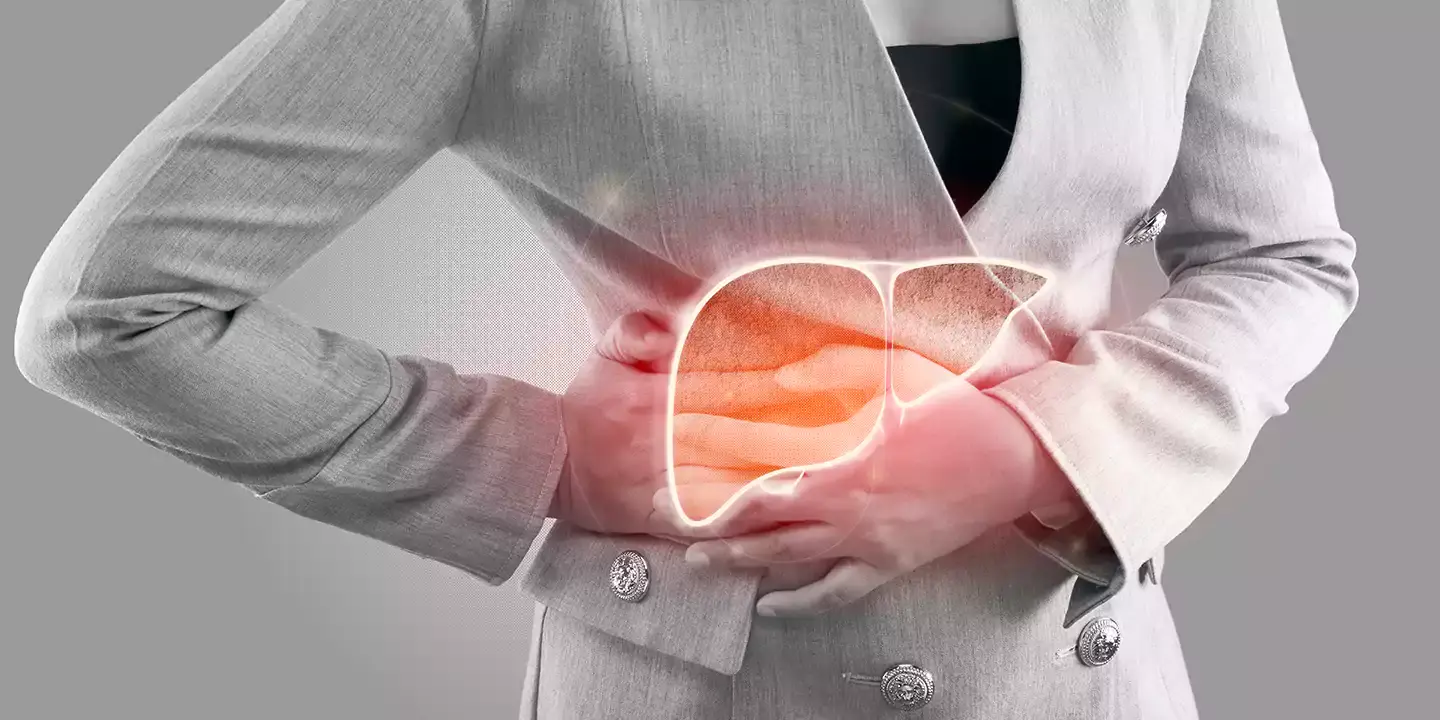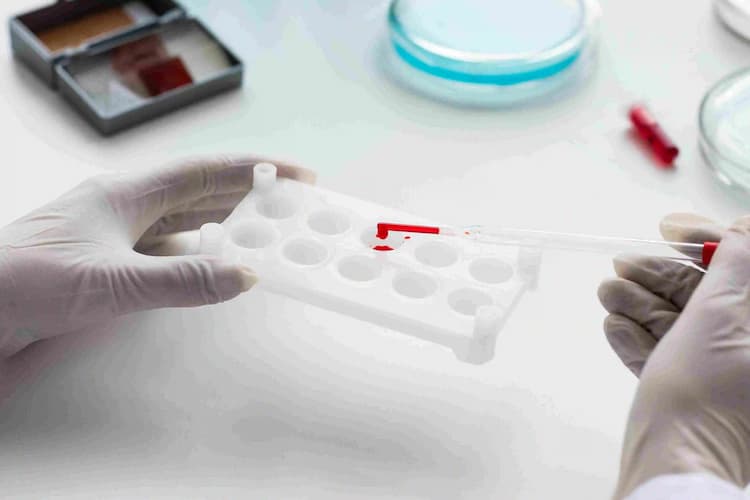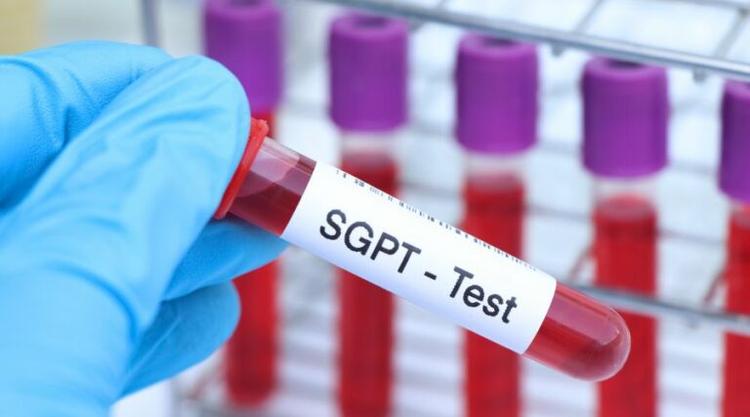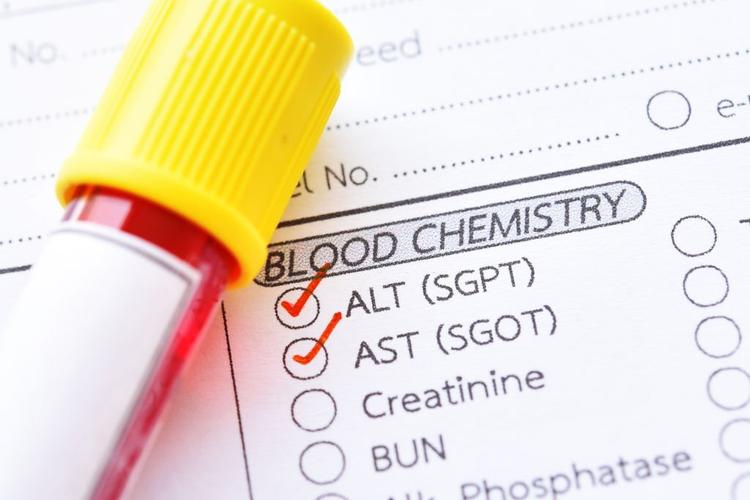Liver Cyst - its symptoms, prevention and treatment

Medically Reviewed By
Dr. Ragiinii Sharma
Written By Prekshi Garg
on Dec 30, 2022
Last Edit Made By Prekshi Garg
on Mar 18, 2024

The liver is our body's largest internal digestive organ. It is crucial to many vital physiological activities, but it is also susceptible to damage from various sources, including poisons, bacteria, metabolic byproducts, circulatory materials, and neoformations. Viral hepatitis, excessive alcohol consumption, and non-alcoholic fatty liver disease are only a few of the various causes of liver disease. Simple liver cysts often referred to as simple hepatic cysts, are one of them.
Every time the word cyst is used, people appear to become anxious. Hepatic or liver cysts are frequently connected to cancer. Although many of us might be living with little, basic liver cysts without ever realising it or needing treatment, if any of the signs and symptoms listed above appear, it's probable that a larger cyst is present.
The abnormal sacs known as liver cysts might be filled with fluid or a dense clump of cells. Liver cysts typically don't create symptoms or need any sort of care. However, if the cysts get large, a person may occasionally experience discomfort or other symptoms that call for medical attention.
You shouldn't jump to conclusions because many of the symptoms associated with big cysts can also be found in other medical disorders. It's crucial to have a prompt and accurate diagnosis rather than self-diagnosing, which usually entails straightforward tests.
In this article, we examine the liver cyst symptoms, the cause of liver cyst, complications of liver cysts, simple hepatic cyst treatment, and liver cyst natural treatment.
What is a liver cyst?
Before we find out what causes liver cysts and hepatic cyst treatment, let us find out what is a liver cyst. Like a balloon, a cyst is a tiny sac or capsule that is filled with fluid, cells, or other stuff. Cysts typically form immediately above or below the skin. The wrists and the back of the neck are where cysts most frequently develop. However, these cysts can also develop in other parts of the body, including the ovaries, breast tissue, and other organs.
A liver cyst is an abnormal tumour that develops in the hepatic organs and contains either a solid clump of cells or liquid remnants. Liver cysts are often benign and do not develop into malignant tumours. However, it is occasionally possible for cystic tumours to form within the hepatic regions, which could lead to liver cancer.
What causes liver cysts?
The abnormality in the bile ducts that leads to liver cysts is unknown in terms of its specific causation or cause of liver cysts. The liver produces bile, a liquid that facilitates digestion. This fluid is transported through ducts or other tube-like structures from the liver to the gallbladder.
Congenital disabilities - Cysts that develop in the liver are frequently congenital abnormalities. By using this word, it is meant that the cysts developed in the womb before conception.
Additionally, liver cysts can develop at any time during a person's life for unknown reasons. A study found that women are more likely than men to have liver cysts.
Cystic hydatid disease - Liver cysts can also develop due to an Echinococcus tapeworm infection. Hydatid disease, cystic hydatid disease, or echinococcosis are all used to describe an Echinococcus infection. These parasites can be found in dogs, wolves, and coyotes, as well as other farm animals that reside on farms. Hydatid disease develops when these parasites infect people, mainly through water systems.
By coming into contact with these animals' excrement, a person can contract the Echinococcus infection. Cysts may develop in the brain, kidneys, lungs, and other bodily organs as a result of this condition. Hydatid disease can result in fever, jaundice, eosinophilia, or an extremely high amount of white blood cells if left untreated.
These cysts are treated by healthcare providers with medication, including chemotherapy, to kill the parasite and surgically remove the cyst.
Polycystic liver disease (PLD) - The condition polycystic liver disease (PLD) is another one that can result in liver cysts. PLD is a genetically rare disorder that occurs in families. It affects one to ten persons out of every 100,000. Clusters of benign or simple cysts appear on the liver in PLD patients. These cysts may resemble a bunch of enormous grapes.
Multiple cysts are developed in PLD patients throughout their lifetimes, yet the disease frequently goes undiagnosed. According to research, only 20% of patients with PLD exhibit obvious symptoms, and some don't detect symptoms until they are adults. An affected person's liver grows over time, resulting in discomfort and enlarged or distended stomachs. PLD is common in people who also have polycystic renal disease.
Other causes of liver cysts include injury to liver cells which impede hepatic functions, or cancer or carcinoma in the liver.
Liver Cyst Symptoms
Only approximately 5% of people who develop liver cysts exhibit symptoms.
The majority of the time, liver cysts appear as one or two little lumps that cause no discomfort to the person and can go unnoticed for years. However, as the cyst starts to enlarge and transform into a fluid-filled hump or semi-solid mass, the affected person will begin to experience some unsettling symptoms, such as:
- An uneasy stomach feeling and abdominal bloating
- Abdominal pain, especially in the upper right corner
- Prominent stomach oedema and protuberance
- Heartburn
- When the cyst starts to bleed, the stomach hurts excruciatingly.
- Nausea and diarrhoea
- Shoulder pain, caused by a cyst that may be bleeding which causes pain along the upper right segment of the body.
Only 5 to 10 per cent of liver cysts, according to a 2015 research, cause symptoms. People who are 60 years of age or older typically experience these symptoms for the first time.
These signs typically show up when a cyst begins to bleed. A person may feel a cyst through their abdomen if it is large enough. Sometimes bleeding stops naturally without the need for medical intervention. If so, the pain and other symptoms may subside in a few days.
What are the Complications of liver cysts
Rarely, liver cysts can grow or enlarge to the point that they start to interfere with the operation of surrounding organs. For instance, a very large hepatic cyst may block a significant vein that returns blood to the heart, called the vena cava. This is the situation where a doctor may advise to have the cysts or cyst be removed surgically.
The majority of liver cysts are benign, meaning they are not malignant. However, cystic tumours make up about 5% of liver cysts. These cystic tumours can very rarely develop into malignant tumours and extend outside of the liver. As a result, doctors will frequently advise surgery to remove a cystic tumour entirely.
How are liver cysts diagnosed?
The majority of liver cyst cases are mild, with just one or two microscopic lumps in the hepatic tissues that do not cause any discomfort or health difficulties. Therefore they are typically not even discovered unless the patient has been scanned for another ailment.
However, the doctor performs imaging analysis to look for symptoms of liver cysts if the patient has no other underlying conditions and reports a considerable external enlargement in the area of the stomach toward the right side, coupled with constant pain.
- Ultrasound. High-frequency sound waves are used in ultrasounds to produce real-time images and films of your internal organs or other tissues.
- CT scan for computed tomography. Through the use of a computer and several X-rays, CT scans can produce three-dimensional images of your bones and soft tissues.
- Magnetic Resonance Imaging(MRI). This painless examination creates crystal-clear images of the organs and bodily structures inside your body using a huge magnet, radio waves, and a computer.
To diagnose or rule out illnesses such as polycystic liver disease, parasitic liver cysts, or precancerous or cancerous liver cysts, healthcare providers may take the following actions if they discover liver cysts during imaging tests:
- Physical examination of the body.
- Medical background. Healthcare professionals could inquire about your family's medical history, past travels, and whether you have a history of chronic liver illness.
- Tests for serodiagnosis. These examinations are utilised to locate particular antibodies in blood samples.
- Ultrasonography with contrast. Ultrasound with contrast (high-frequency sound waves are sent through body tissues and the echoes are recorded and transformed into video or photos).
Treatment of liver cysts
Only symptomatic patients should receive treatment for liver cyst in case of polycystic liver disease (PCLD) or isolated nonparasitic liver cysts. Asymptomatic people do not need therapy because there is a lower risk of problems from the lesion than from the therapy.
Hydatid cyst patients should have treatment for liver cyst to avoid the consequences of cyst growth and rupture. Resection is recommended if imaging examinations of cysts reveal anomalies that could be cystic tumours.
The majority of benign or easy liver cysts don't require treatment. But when liver cysts grow to more than 4 centimetres across, medical professionals may choose to remove them.
Large benign cysts, polycystic liver disease cysts, and precancerous or cancerous liver cysts can all be removed through various procedures and surgeries, including:
- Aspiration through the skin - In order to implant needles or catheters into liver cysts and drain the cysts' fluid, medical professionals employ ultrasound or CT imaging. A tiny needle passed through the abdomen by a doctor can be used to drain the cyst. However, this is typically only a temporary solution because the fluid might come back over time.
- Fenestration of cysts - Surgery is the most effective treatment of liver cysts. This surgical procedure removes the cyst wall to treat big cysts.
- Hepatic resection - Through this procedure, the liver's cyst-affected regions are removed.
- Transarterial embolisation (TACE) - Similar to how you may construct a dam in a stream to stop the stream from flowing, this therapy has the same effect. Medical professionals inject anti-cancer medications into an artery that provides blood to your liver. Then, a chemical to block the artery is injected. The ingredients serve as a dam, preventing the anti-cancer medication from floating away and keeping it swirling around the tumour.
- Surgery - to get rid of malignant or healthy cysts. The cyst can typically be removed by a laparoscopic surgeon, necessitating just 2 or 3 tiny abdominal incisions. Cysts are unlikely to recur after excision.
Liver transplantation. This procedure treats a polycystic liver disease unresponsive to medicine or other liver cyst removal procedures.
Liver Cyst Natural Treatment
Numerous natural agents have been shown to have protective and therapeutic benefits on the liver in recent studies on functional foods like nutraceuticals, and several other herbal and nutritional supplements also have modes of action that make them advantageous as hepatic cyst treatment.
In the treatment of liver illnesses, a number of organic foods and beverages with dietary supplements have been proven to be both safe and effective. Natural diets, particularly those derived from plants, have several benefits for promoting liver health. As a result, they have traditionally been used to treat and prevent liver illnesses all over the world.
Several liver cyst natural treatment can be used when liver cysts are basic cysts. The following are natural home therapies that can occasionally be used for hepatic cyst treatment to make it progressively smaller.
- Avoid dairy: since the hormones in dairy products promote cyst formation.
- Reduce exposure: to substances that can harm liver cells, including alcohol, toxins in the environment, too much sugar, and some drugs.
- Liver tonic: It can assist in safeguarding and restoring liver cells that have been harmed.
- Supplement with selenium: selenium is known to protect liver cells.
- Raw vegetable juices: Juices made from raw vegetables, such as kale, broccoli, radishes, and onions, are beneficial for the liver.
- Minimise fats: Reduce your intake of fats because trans fats, saturated fats, and fermented foods can exacerbate symptoms like bloating.
- Dandelion root: helps to relieve various cyst-related symptoms.
- Lemon juice: Freshly squeezed lemon juice taken three times a day can aid in liver detoxification.
Frequently Asked Questions
Do liver cysts naturally disappear?
According to certain medical studies, benign liver cysts resolve on their own. It's crucial to remember that most liver cysts are benign and don't enlarge to the point where they cause symptoms. Healthcare professionals may surgically remove large cysts.
Are liver cysts cancerous?
Rarely do liver cysts develop malignant or precancerous characteristics. 30% of liver cysts develop into cancer, while 1% to 5% of all liver cysts are precancerous. Medical professionals use surgery to treat malignant liver cysts.
Is it common to have a benign liver cyst?
The most typical kind of liver cysts is benign liver cysts, often known as simple cysts. The prevalence of liver cysts is estimated to be between 5% and 10% worldwide and between 15% and 18% in the United States.
What should I do if a liver cyst is diagnosed in me?
For certain individuals, liver cysts require surgery or other medical care. Ask your doctor for advice on how to handle the side effects of treatment if it applies to your situation.
Can diet prevent polycystic liver disease?
No particular diet can stop PLD. A balanced diet will assist in preserving liver function, though.
Foods a person should eat regularly include:
- Fruits and veggies in abundance
- Whole grains high in fibre, such as whole grain bread, rice, and cereals
- Low-fat dairy items
- Lean meat and other protein-rich foods
The following foods should be avoided:
- Processed foods with excessive sugar, fat, and salt content
- Alcohol
- Shellfish that are raw or uncooked, like oysters and clams
Can abdominal pain be caused by hepatic cysts?
It makes sense that people would want to know if hepatic cysts hurt. The majority of the time, there are no symptoms or signs because many people do not even know when they have a single little liver cyst. But if the cyst is huge, it could hurt and be uncomfortable. Most frequently, the upper-right portion of the abdomen feels painful. These cysts may need to be drained or removed.
Conclusion
Although this situation suggests that almost all liver cysts are benign and hardly ever create symptoms that could impair quality of life, nobody likes to learn of an unexpected health condition. Instead of surgery to remove cysts, medical professionals frequently decide to monitor cysts for simple hepatic cyst treatment. To learn everything there is to know about the condition and how to treat it, consult an expert. The management of liver disorders can be carried out on a daily basis with the incorporation of knowledge about proper diet and lifestyle.
Leave a comment
3 Comments
Gregory Bundy
Apr 12, 2024 at 1:27 AM.
I was just informed that the Scan I took yesterday, 4/9/24, Showed a cyst on my Liver. They want an MRI to get a better look. So I needed more information. It would be nice to treat this naturally and have it cleared by then.
Myhealth Team
Apr 12, 2024 at 7:21 AM.
Hi, While it's important to follow up with your doctor for further evaluation and the recommended MRI, you can support your liver health naturally by maintaining a healthy diet, staying hydrated, managing stress, limiting alcohol, considering herbal supplements (with caution and under supervision), and engaging in regular exercise. Thankyou
judy davis
Nov 14, 2023 at 7:48 PM.
A recent trip to the emergency room required morphine to ease my pain. After a CT with contrast I was diagnosed with a large liver cyst and referred to a gastroenterologist. The earliest appt. I could get is 6 weeks away. With careful food choices I am feeling better but am very worried about waiting so long for treatment. Your article is extremely helpful.
Myhealth Team
Nov 17, 2023 at 11:11 AM.
Continue with your careful food choices. If pain worsens, contact your healthcare provider or ER. Inquire about an earlier appointment. Follow professional advice.
Wiltes E.Acohon
Oct 2, 2023 at 10:51 PM.
Hello!thanks a lot for this helpful information.I am suffering from Poorly differentiated colon Adenoca st.4,s/p trephine loop colostomy s/p C2 chemo. And my CT scan says that mvy liver is enlarged.It exhibits normal parenchymal enhancement.Mulitiple hypodense foci are seen in the Liver,exhibiting heterogenous in contrast study.The largest of which measures 15.0x 10.6xm seen in the right liver lobe.The intrahepatic ducts and common bile duct are undilated.The portal vein and it's tributaries are unremarkable..Will you please tell me what medication will I take?thanks and more power!
Myhealth Team
Oct 7, 2023 at 7:34 AM.
Consult your healthcare provider for personalized guidance and medication recommendations based on your specific medical condition and CT scan findings. They will assess your case and provide the most appropriate treatment options.


